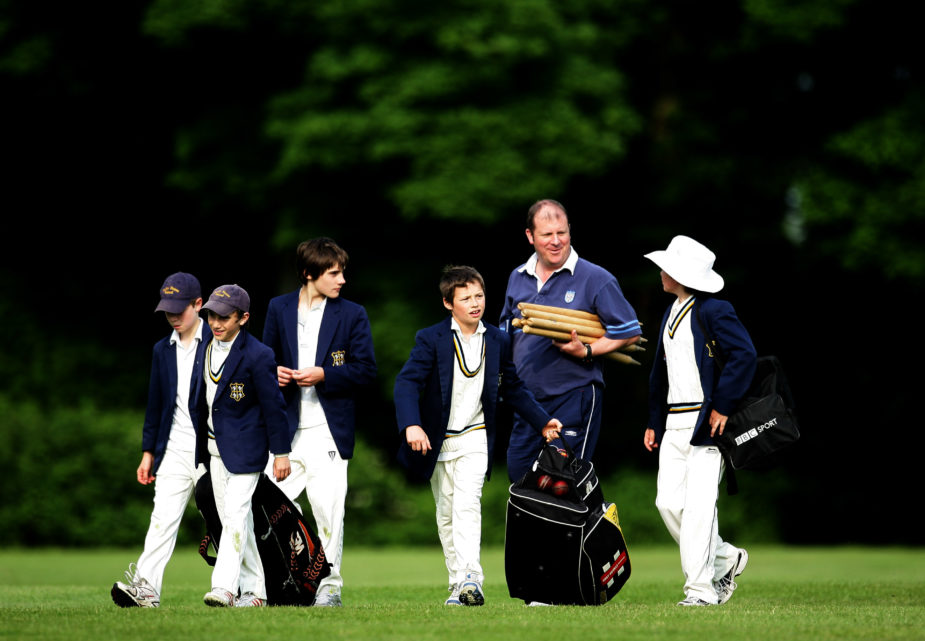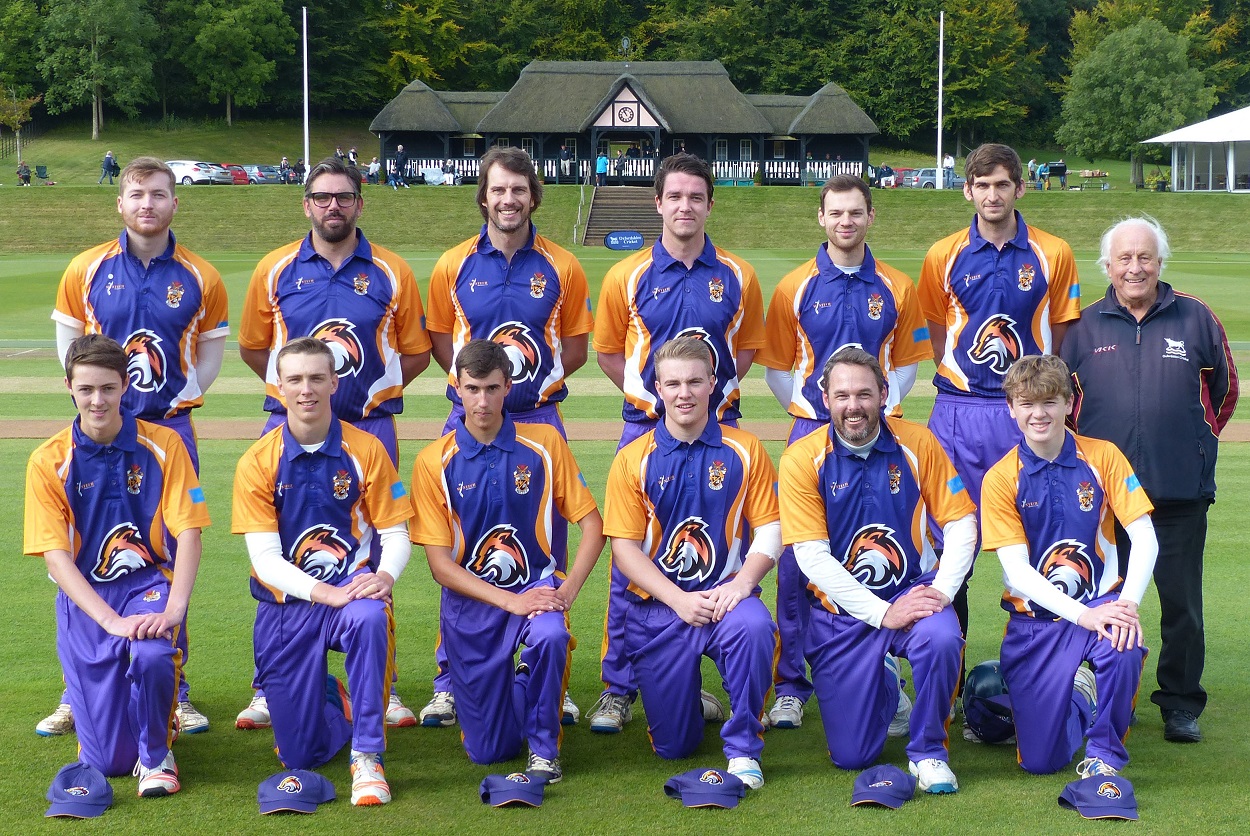The Club Debate: How do we solve club cricket’s teenage drop-off?

 by Rich Evans
by Rich Evans
@Rich_Wisden 10 minute read
Why do so many young cricketers become disconnected with the game and how can we improve the junior-to-senior conversion rate? Rich Evans investigates
“The younger generation, whether you like it or not, are just not attracted to cricket”
– ECB chairman Colin Graves on the rationale behind ‘The Hundred’
Colin Graves’ comments regarding cricket’s appeal to youngsters compelled Phil Mist, chairman of Bicester & North Oxford CC (BNOCC), to write a passionate letter to the Daily Mail on the declining state of the grassroots game. Mist blamed the ECB policies that had “led to a decline in players” and lamented their “single-minded approach to Premier League cricket”.
It speaks volumes that Graves’ assertions about the perceived lack of interest among the next generation sparked a wider dissection of club cricket. They cut to the core of the issue: future-proofing our game is the biggest anxiety for many people involved at grassroots level. If kids really don’t see the appeal, where does that leave us?

Colin Graves says we need the 100-ball format because young people are ‘not attracted to cricket’
***
Player retention in the 16-to-19-year-old age bracket is one of cricket’s, and sport in general’s, biggest problems. The ECB National Playing Survey in 2013 concluded that 40 per cent of young people who play more than 12 weeks a season were dropping out of cricket by the age of 19 (though participation was falling significantly, irrespective of age). Their recommendations to arrest the slide included creating the right dressing-room culture, keeping friends together and making sure that youngsters get a meaningful game – notions that contradict the win-at-all-costs mentality of league cricket.
“What we are trying to do is offer choice,” the ECB’s outgoing director of growth and participation Matt Dwyer recently told Wisden Cricket Monthly (WCM) on the motives behind The Hundred. “We want people to be able to play the format that’s most appropriate for their lifestyle. Whatever those formats are, we’ll support – ultimately, participation is everything.”
But the poor conversion rate of junior cricketers into senior cricketers is more than just a formatting issue. Exams, relationships, university, careers, family pressures and a whole host of socio-cultural factors all play their part.

Matt Dwyer: ‘Participation is everything’
The day after Mist’s letter was published, WCM caught up with him. “Unless you’ve got players coming through, there will be no cricket in 30 years’ time,” he says. “It’s becoming harder to get juniors to take up the sport – there’s a huge wastage. If you have 100 in your under 11s, you would’ve done bloody well to have 20 still playing when they’re 17.”
Burnley CC chairman Michael Brown sympathises. “From 15-18, there’s a reasonable drop-off,” he agrees. “Some drop off when they realise senior cricket at third-team level is quite hard. Another social influence is a lot of kids leave the area for further education, compared to 30 years ago when there was a more manual working-base in towns, who were more likely to stay in the area and get employment.”
Mist’s club, who play in the Cherwell Cricket League, currently has 110 junior members. They’re running All Stars Cricket for the second time this summer and have increased the number of 5-to-8-year-olds enrolled on the course from 33 last year to 61 in 2018. He describes All Stars Cricket as “a brilliant incentive” but, as Paul Blackwell, junior academy coaching coordinator of Rickmansworth CC, points out, “All Stars was a great idea and really well executed, but I question whether the objective really suited what we needed as club cricket organisers. The problem wasn’t attracting 5-8-year olds. The problem was trying to attract kids at secondary school age.” This year the ECB also released plans for 9-12-year-olds.

The retention of junior players is a real issue for club cricket
“There’s pressure on junior cricket now,” says Simon Prodger, managing director of the Club Cricket Conference. “The under 15s and 16s are struggling to get sides out. There is a huge fallout from that age group moving into senior cricket. The developments of this under 19 T20 competition has been hit and miss, but it’s important that youngsters are able to play with their mates. Young people feel that more than they did. When I was a kid, all I wanted to do was play at the highest level.”
Whilst the NatWest Club T20 was a success for my club, All Stars Cricket, the ECB’s biggest initiative of the last five years, has not addressed the black hole between junior and senior cricket. Rightly or wrongly, Mist feels the national governing body is no clearer about the remedy than any other of the recreational game’s leading figures. “Everybody’s sitting back, scratching their heads, saying, ‘What’s going on?’. They’re bereft of ideas.”
***
Junior sections are paramount to a cricket club’s long-term survival prospects. It’s dog-eat-dog; the establishment of hubs at larger clubs has accelerated the decline of smaller village teams who do not have the resource or catchment area to attract a wave of youngsters. “We have contacts with local schools, free coaching in the winter, and proper coaches that teach juniors about batting, bowling and life,” says Mist. “But a lot of clubs are not in such a privileged position; they’re pulling their third and fourth team out of leagues because they haven’t got the structure to coach a high volume of youngsters. It’s down to one dad who does his Level 1 coaching badge, but when his son’s old enough, he’s out.”
Mist’s club Bicester & North Oxford are the reigning Oxfordshire Cricket Wilf Bennett T20 Trophy Champions, and nine of the final-winning team were under 28. Of those, seven had made their way through the club’s junior ranks. They are bucking the trend.

Bicester & North Oxford pose for a team photo before the Oxfordshire Cricket Wilf Bennett T20 Trophy final
Mist outlines the stresses of running a junior section: “Getting adults who are DBS-approved is a pain; the paperwork and the collecting of money is a pain; getting someone to do their Level 1 and Level 2 coaching qualifications is expensive and time-consuming; to get people to do ‘safe hands’ and first aid training is a non-stop problem; raising administrators and finding parents to not just use the club as a creche but to get involved in managing a side – they’re few and far between. A number of adults are required and the cost is phenomenal.”
Is it all worth it? Damn right it is, says Mist. “I just want kids to turn up on a Friday with a smile on their face; that in itself is a victory. If you have no juniors, you’ll have no cricket in 10 years’ time. It horrifies me to say that.”

Prodger, who is chairman of Watford Town CC in addition to his role with the Club Cricket Conference, calls the junior section “the air in our lungs which makes us feel there’s a future for our club… You only have one option: build the club from the bottom up and make a strong junior section. Focus on that, accept whatever may come in terms of league position and build for the future. I don’t see any other option.”
Opinions on formats, duration and travel time are regularly vented, but Mist is far from the only devout club cricketer who is hugely concerned by the impact of the beast of league cricket. Is it a turn-off for young cricketers? Many mourn the loss of Sunday friendlies – a low-pressure, family-friendly environment, ideal for developing young players. Michael Brown and Paul Blackwell are in favour of wearing coloured kit, while the former believes weekend T20 needs a more prominent position in the club cricket calendar. Matt Dwyer is a big fan of 40/40 – a more natural extension to T20 and part of the ECB’s blueprint through their ‘Get The Game On’ campaign.
Many clubs are run by retirees. In some cases, if one soul was to give up or pass away, the entire club would be brought to its knees overnight. “One of the anachronisms of club life is that you have older members running a club, which supports a younger membership that does not engage in the management of the club,” says Prodger. “They no longer have the time to support outside of playing. I can understand; those are now the social dynamics, but volunteers are hugely significant to the survival of cricket clubs.”
Watford Town have introduced a new initiative to try and tackle the problem. “We have junior representatives on our committee, who can voice the opinions of young cricketers at the club,” adds Prodger. “They have an equal right to comment and highlight the issues for younger players. In terms of helping us identify the environment of the club and its outreach, that was an important move. It has helped other members of the committee understand the relevance of the junior section. Trying to get parents to become non-playing members and part of club life is an important part of this whole process. There is a disconnection between the junior and senior sections and I think that clubs have to work hard at identifying how you can cross that bridge.”
***
Is junior cricket failing senior club cricket? After all, we welcome these kids into our clubs, nurture them, then they fall away before they’re able to evolve into fully-formed club cricketers. How selfish, after all we’ve done for them! What’s the point of putting all that work in?
But when you take a step back and assess the overall landscape, perhaps it is club cricket that is failing our junior cricketers.
“We know there are challenges, but there are some very successful clubs out there,” says Prodger. “We’ve got to understand how club cricket can be relevant today with all the social pointers that have an influence on young people; how to make club cricket more interesting, engaging and relevant for them, given their environment. We can’t harp on about how good it was back then. How do we make being a member of a local club relevant to young cricketers of whatever ability? That’s the bigger question.”
It’s a question that still needs answering.
Your voice matters: Join the debate and share your views on grassroots cricket by commenting below, emailing [email protected] or tweeting @WisdenCricket.
READ MORE:
Last month’s club debate: Will Law 42 solve club cricket’s attitude problem?
And here’s what our readers said on last month’s debate.


It's complicated, and there's no single answer. In short cricket needs to be designed for millenial parents, kids born this century and ready for current All Stars who will be moving to open age cricket as soon as 2021. Interesting approach in Yorkshire which is quickest to find solutions given the massive volume of cricket up there, such as the recent Leeds League proposal www.twitter.com/LeedsLeague and the success of Player Loans in reducing conceded matches ypln.play-cricket.com. Clubs can find it difficult at times to join up their junior and senior sections although there are some great examples out there. All Stars has great potential - the next task is getting it right for 9-12 year olds. Dr Ian Renshaw (Matt's dad) has been doing some great research on the way forward, this is a great watch www.facebook.com/QCcommunitiesandpathways/videos/1647058045367331. The map of cricket clubs has changed with society over the past 25 years, with the father and son village green model making way for multi-team clubs with junior sections. Now more than ever the #CricketFamily needs to support each other with larger clubs parterning up with smaller ones, otherwise facilities will be lost when clubs fold, everyone will be travelling even further to play turning off more players. Once a ground is gone, it usually stays gone - places to play will be needed as the game grows again. The best organisations (clubs, leagues, boards local and national) are forward thinking, an approach which causes conflict in a traditional sport - the average age of a cricket administrator is 57 and the ECB recently scored poorly in the male/pale/stale stakes in terms of e.g. women in senior positions and the pay gap www.bbc.co.uk/sport/cricket/43264547. One administrator recently posted "Have a look at the twitter board of the Cricket Board, who blindly conform to the ideas of the ECB. It is full of pictures of little kids in coloured clothing playing with coloured and plastic bats, balls and stumps, and is purportedly succeeding in bringing youngsters back to having "fun" playing "cricket". Only one change will achieve that. Put Test matches back on free to air." This totally misses the point - it will be a different world in 2020 compared with 2005, turning back clock not the answer and the pace of technological change is ever increasing. Amazon will be screening premiership football, and rather than sitting in front of a test match for 5 days (as I did). Terrestrial tv firms do not want to block out their schedules or bid for rights - it will be about clips, highlights and streaming in future which gets us back to the starting point: millenials, people born this century and today's All Stars, who are 100% of cricket's future.